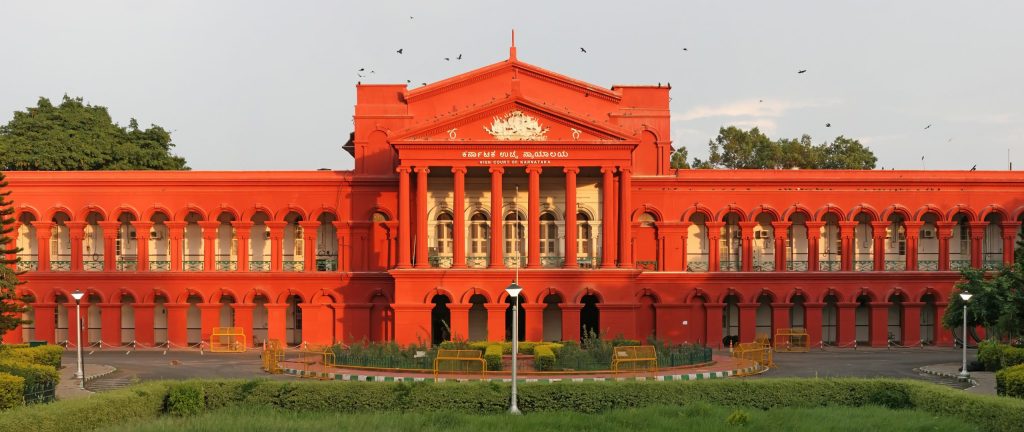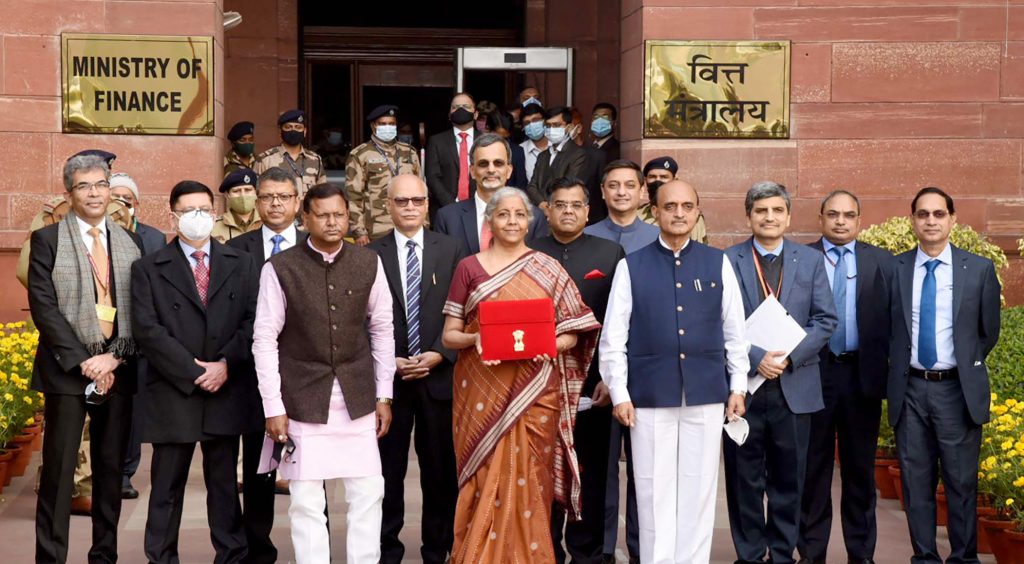Now Reading: Is Indian System Effective in Increasing Women’s Access to Equal Opportunities?
-
01
Is Indian System Effective in Increasing Women’s Access to Equal Opportunities?
Is Indian System Effective in Increasing Women’s Access to Equal Opportunities?
There is no tool for development more effective than the empowerment of women. – Kofi Annan
Women in India constitutes nearly 48.35% (approx.) while men constitutes 51.64% (approx.), on the other hand sex ratio of India is 940 females per 1000 males in 135 Cr. of population. The yearly change in the population is less in comparison to early stages, like in 2016 it was 1.21% (approx.) while in 2000 it was at 1.86% (approx.) but in 2019 it has been further reduced to 1.20% (approx.).[1].
Women Empowerment means overall development of women so that they become strong enough to face the difficulties and live a fearless and unbiased life. It refers to giving what they desire as a human and be treated equal to men. This can be done by equal opportunities to women. The empowerment of women is nowadays a burning issue in our country and heavily depends upon the various types of variables like social, educational, political, etc. Women empowerment helps in grooming the women who will further help in developing the society because as per a research by TalentsMart women have more Emotional Intelligence (EQ) so, they have ability to analyze the situation and person with whom they are dealing with quickly and use this knowledge to get best results in life[2]. It is also stated by Manu Goyal at Washington University School of Medicine that a woman’s brain is younger and youthful then that of men and that is the reason why they are treated smarter than men but in India women are not given equal opportunity to prove themselves[3].
So, women empowerment is important and Indian Government and Judiciary is taking efforts in this regard that is helping in opening new gates for them.
NEED FOR EQUAL OPPORTUNITIES
ACCESS TO EDUCATION AND EMPLOYMENT:
In India, there are comparatively less number of females who get education. The ratio is just 940 girls per 1000 boys which have led to very low attainment of education. There has been a slow rise in the percentage of women who are married and attained education of 10 or more than 10 years that is from 11% in NFHS-1 to 17% in NFHS-3. Women of age between15-49 are mostly being employed in the farm fields and only 7% of them are employed in other fields of employment and most them are working due to bad economic condition of their family. Furthermore, some of the women are paid but only some part of their salary, the ratio of employed women between ages 15-49 is just 43% vs. 87%.[4]
OVERALL DEVELOPMENT:
The women in India if given equal opportunities can earn and contribute to GDP which will make them more confident and independent. This will also lead to an increase in participation of women in national development. Also, they will make the country proud in every sphere like medical sciences, engineering, social science, etc.
DECISION MAKING POWER:
As per a research, women are smarter than man but in India women are not allowed to take decisions in the family matters or any other matters. Furthermore, in many houses women has to give her earnings to their spouses or family over which they cannot say no.
These are some of the reasons due to which the need for equal opportunities raises.
CONSTITUTIONAL PROVISION
ARTICLE 14
It states that every person should be treated equally before law. There should be no discrimination on the basis of gender, caste, race, etc. Women are protected under this article.
ARTICLE 15
It deals with prohibition on discrimination against any person. Clause 1 deals with the Prohibition of discrimination against women and further clause 2 says that a state can make any special provision for building equal opportunities for women in the society.
ARTICLE 16
Clause 2 of this article specifically mentions that no women should be discriminated at the workplace on the ground of gender.
ARTICLE 39
Clause a, d, e of this article specially deals with women rights. It states that men and women should be given equal rights in terms of living standards, remuneration and working atmosphere.
ARTICLE 40
This article gives special reservation to women in panchayats seats. According to this article, the reservation is up to 1/3rd of seats of panchayats. Further article 243D and 243T gives further reservation in legislative and municipality.
ARTICLE 42
This article helps in securing rights of the women by providing maternity relief and gentle working condition.
ARTICLE 51A
This article states that every citizen should live with peace and harmony and women should get respect in the country. No women should be disrespected due to any reason[5].
LEGAL PROVISION RELATING TO WOMEN
1. SEXUAL HARASSMENT OF WOMEN AT WORKPLACE (PREVENTION, PROHIBITION AND REDRESSAL) ACT (2013)
This act helps women to feel safe at the workplace as they were earlier exploited at their office but after the Vishaka Case[6], some guidelines were stated which further got legal sanction in 2013 after being passed by both the houses and the President of India. As per this act every company having more than 10 employees has to create an Internal Complaints Committee in every branch or office so that they can feel safe and perform better at their jobs[7].
2. PROTECTION OF WOMEN FROM DOMESTIC VIOLENCE ACT (2005)
This act was enacted to protect women from domestic violence and was enforced on 26 October 2006. This act is different from Section 498Aof Indian Penal code and helps women to live fearlessly. It has also helped in extending their services in the development of the society[8].
3. THE MUSLIM WOMEN (PROTECTION OF RIGHTS ON MARRIAGE) BILL, 2017
This bill is for the protection of Muslim women from the devil of Triple Talaq and other exploitation. It is a step forward towards securing justice to women which will help in increasing women’s access in the country. As per this bill, a husband who gives Instant Triple Talaq to his wife will be penalized with three years of imprisonment or fine[9].
4. HINDU MARRIAGE ACT, 1955
It deals with the provisions relating to marriage of two Hindus. It has some section specifically to protect women from harassment caused to them from marriage. It prohibits bigamy or polygamy, domestic violence and other related offences[10].
5. HINDU SUCCESSION (AMENDMENT) ACT, 2005
This gives equal share to women in the ancestral property which they were deprived off before coming of this amendment[11].
Many more laws have been formulated for the protection and development of women in the society.
JUDICIAL APPROACH TOWARDS WOMEN EMPOWERMENT
VISHAKA AND OTHERS VS. STATE OF RAJASTHAN AND OTHERS[12]:
In this case, in 1992, Bhanwari Devi also known as Vishaka, a social worker of the Rajasthan society was gang raped by upper class men because she tried to stop a child marriage. She suffered from many injuries. Later after getting mentally and emotionally stable she filed a petition in the Hon’ble Supreme Court against the state and Union of India under Article 14, 19 and 21 of the Indian Constitution for availing the fundamental rights of women in the society at workplace.
The court on 13th August 1997, consisting of three judge’s Constitutional Bench gave the definition of sexual harassment at workplaces:-
“Any unwelcome sexually determined behavior (whether directly or by implication) as physical contact and advances, a demand or request for sexual favors, sexually colored remarks, showing pornography or any other unwelcome physical, verbal or non-verbal conduct of sexual nature”
The Court also made some guidelines for protection and upliftment of women at their office. It was directed that every office should have a Grievance Redressal Committee where there are more than 10 employees and should conduct proper inquiry and make further rules for protection of female employees.
MOHD. AHEMED KHAN VS SHAH BANO BEGUM [13](SHAH BANO CASE):
It was a landmark judgment in securing the rights of Muslim women. This case was a milestone in the fight for rights by Muslim women in India and launching the battle against Muslim Personal Law.
In this case, Shah Bano, the wife of Mohammed Ahmed Khan was given divorce on April 1978 and later, he refused to give her maintenance of Rs 200 so she filed a plea against him under Section 125 of the Code of Criminal Procedure and court fixed the maintenance of Rs 25 per month to be paid by the husband. On July 1908 she filed another plea for maintenance in Hon’ble High Court and Madhya Pradesh High court fixed at Rs 179.20 and later on February 1981 her case was referred to a larger bench by two judge bench and on April 1985 Hon’ble Supreme Court gave his landmark judgment.
Chief Justice of India, Y.V. Chandrachud said in his decision: “Section 125 was enacted in order to provide a quick and summary remedy to a class of persons who are unable to maintain themselves. What difference would it then make as to what is the religion professed by the neglected wife, child or parent? Neglect by a person of sufficient means to maintain these and the inability of these persons to maintain themselves are the objective criteria which determine the applicability of section 125. Such provisions, which are essentially of a prophylactic nature, cut across the barriers of religion. The liability imposed by section 125 to maintain close relatives who are indigent is founded upon the individual’s obligation to the society to prevent vagrancy and destitution. That is the moral edict of the law and morality cannot be clubbed with religion”.
SHAYARA BANO VS. UNION OF INDIA (TRIPLE TALAQ CASE)[14]:
The brief facts of the case are that the victim Shayara Bano went to meet her parents in Uttrakhand in the year 2015. Her husband, on October 2015 sends her a letter with word Talaq written thrice and ended their 15 years marriage. Later on, the victim filed a petition in the court where her husband opposed her on the grounds of religious practice and personal laws of Muslim.
So, she filed a Writ Petition in Hon’ble Supreme Court on February, 2016 against Triple Talaq and other irrational practiced under Islam as it violates fundamental rights given to them by Constitution of India, these rights are under Article 14, 15, 21 and 25.
On Tuesday 22nd August, 2017, Hon’ble Supreme Court held that the Muslim practice of Triple Talaq is an unconstitutional and irreligious practice as it is not written anywhere in the Quran about Triple Talaq. The Muslim Law Board also stated that there is no such specification in Quran about Triple Talaq and hence the apex court struck down the custom with a ratio of 3:2. Later, a bill was formed in the name of Muslim Women (Protection of Rights on Marriage) and in December 2018 it was passed in Lok Sabha and is ordinance according to which a husband can get penalized for giving Instant Triple Talaq to his wife till it is passed in both the houses.
INDIAN YOUNG LAWYERS ASSOCIATION VS. THE STATE OF KERALA[15]
In this case, a Public Interest Litigation was filed in the Hon’ble Supreme Court against the practice followed in Sabrimala Temple which banned the entry of women aged in between 10 to 50 years because this is their menstruate age and the god who is worshipped there named as Lord Ayyappa was a Naishthik Brahmacharya. This practice infringed women rights to movement, worship, equality, freedom which are guaranteed by the Indian Constitution. This case was filed by five young lawyers of Indian Young Lawyers Association to protect the right of women devotees of that Temple.
In this case, a bench consisting of CJI Dipak Misra for himself and J. A.M. Khanwilkar, J. R.F. Nariman and Dr D.Y. Chandrachud, J. Indu Malhotra by 4:1 majority gave a decision that his practice violates a women right to worship, equality, movement, freedom which are guaranteed under Articles 14, 15, 17, 25, 26 of the Indian Constitution and thereby removed this barrier.
The biggest irony in this case was that the only women Justice Indu Malhotra gave a contrary statement. She stated that this case is not maintainable because no person who has filed a case has a direct effect or has suffered earlier due this.
GOVERNMENT SCHEMES FOR WOMEN UPLIFTMENT
The Government in India is taking several measures and steps in the path of women empowerment. Some of these steps and schemes are mentioned below:-
BETI BACHAO BETI PADHAO SCHEME:
The concept of this scheme was introduced and discussed on 7thJuly 2014 and later it was addressed to nation on 15th August 2014. It was being implemented in the budget speech of 2014-2015. It was later launched on 22nd January 2015.
Its main goal was to give and relish the girls with knowledge and skills. It has an objective to eliminate discrimination on the basis of gender under Pre-Conception & Pre-Natal Diagnostic Techniques (Prohibition of Sex Selection) Act, 1994 (PC&PNDT Act). Also to exercise the right to life and privacy under Article 21 of the Indian Constitution as well as the right to free education till elementary level[16].
INDIRA GANDHI MATRITVA SAHYOG YOJANA (IGMSY) – A CONDITIONAL MATERNITY BENEFIT SCHEME:
The scheme was introduced in the 11th 5 year plan documents (Vol. II) as Indira Gandhi Matritva Sahyog Yojna in 2010 which was later being renamed as Matritva Sahyog Yojna in 2014 and it was further shortened to Pradhan Mantri Matritva Vandana Yojna in 2017. Prime Minister detailed the scheme in 2017 in his new year’s speech.
It is a conditional cash transfer scheme for pregnant and lactating women to provide them part of their wage as compensation to them so that they can rest and get proper nutrition for their child. The main objective of this scheme is to provide better care and nutrition as well as promoting them to have necessary nutrition and early nourishment of their new born babies for six months. Under this scheme only women above 19 years can claim the fund for their first two live births[17].
SWADHAR GREH:
In India, there is an exploitation of women in many ways so the basic goal of this scheme is to create a supportive framework for all exploited women through different ways and let them live their lives with dignity and conviction. It will help them in providing shelter, food, clothing, etc. This scheme will also provide women and girls who are being exploited, rehabilitation centres which will help them in regaining emotional strength and provide legal aid and guidance to start a fresh and happy life.
These objectives can be attained only by providing accommodations with food, clothing, medical facilities, etc. and vocational and verbal counseling through phone as well as by trained professionals.[18]
WORKING WOMEN HOSTEL:
Working Women Hostel is similar to Swadhar Greh as it helps in providing hostels for accommodation to women who work at some place and they can also stay with children upto an age of 18 years. Those women who are under training must have a training period not exceeding 1 year and collectively as a group should not acquire more than 30% of the total capacity. Children with these women can reside in the hostels up to an age limit that is for girls up to 18 years and boys up to 5 years.
There has been some special treatment given to some women like first preference must be given to disadvantaged women’s and physically handicapped women must be provided some reservation but no reservation on any other basis[19].
EFFECTS OF THE SCHEME LAUNCHED BY GOVERNMENT FOR THE PURPOSE OF UPLIFTMENT OF WOMEN
The schemes implemented by government in the path of upliftment of women have been proven effective. These schemes have enabled women in living a better life. Collectively the schemes or steps taken by the Government will help women in all fields and which will result in increasing their contribution in GDP of nation and growth of economy.
CONCLUSION
Women employment is a way through which they can become independent, confident and can enjoy equal status in the society. It is a process of overall development of women in the society. Women in India have to face a lot of challenges in our country but Indian Judiciary and Legislative has been taking many steps in uplifting women in our society. These steps have been taken so that women gets equal opportunities as that of men and which will help in knowing the real potential of the women in the society.
The empowered woman is powerful beyond measure and beautiful beyond description.
– Steve Maraboli
[1] Population of India 2019, INDIAONLINEPAGES.COM, http://www.indiaonlinepages.com/population/india-current-population.html.
[2] Travis Bradberry, Why Women Are Smarter Than Man, FORBES (June 21, 2016, 08:13 AM), https://www.forbes.com/sites/travisbradberry/2016/06/21/why-women-are-smarter-than-men/#6dbfd0cc17e6.
[3] Women seems to have younger brains than men the same age, NEWSCIENTIST (February 5, 2019), https://www.newscientist.com/article/2192739-women-seem-to-have-younger-brains-than-men-the-same-age/.
[4] Population of India 2019, INDIAONLINEPAGES.COM, http://www.indiaonlinepages.com/population/india-current-population.html.
[5] INDIA CONST.
[6] Vishaka Ors. Vs. State of Rajasthan and Ors, 1997 6 SCC Cri 932.
[7] Sexual Harassment of Women at Workplace (Prevention, Prohibition, Redressal Act) 2013, No. 14, Acts of Parliament, 2013 (India).
[8]Protection of Women from Domestic Violence 2005, No. 43, Acts of Parliament, 2005 (India).
[9] The Muslim Women (Protection of Rights on Marriage), 2017 (India).
[10]Hindu Marriage Act, 1955, No. 25, Acts of Parliament, 1955 (India).
[11] Hindu Succession Act (Amendment), 2005, No. 30, Acts of Parliament, 2005 (India).
[13]1985 SCR (3) 844.
[14] (2017) 9 SCC 1
[15] 2018 SCC OnLine SC 1690.
[16] Beti Bachao, Beti Padha,, MINISTRY OF WOMEN AND CHILD DEVELOPMENT, GOVERNMENT OF INDIA (April 26, 2018), http://www.wcd.nic.in/sites/default/files/Revised%20Guidelines%20BBBP%20-26th%20April%2C%202018_2.pdf.
[17] Quick Evaluation Study on Indira Gandhi Matritva Sahyog Yojana, NITI AAYOG (April, 2017), http://niti.gov.in/writereaddata/files/document_publication/IGMSY_FinalReport.pdf.
[18] Swadhar Greh, MINISTRY OF WOMEN AND CHILDREN, GOVERNMENT OF INDIA, http://wcd.nic.in/sites/default/files/Revised%20Guidelines%20Swadhar%20Greh%2C2015%20%28%20English%29.pdf.
[19]Working Women Hostel, MINISTRY OF WOMEN AND CHILDREN, GOVERNMENT OF INDIA, http://wcd.nic.in/sites/default/files/wwhscheme09062015.pdf.








